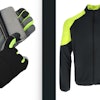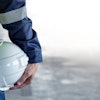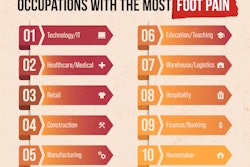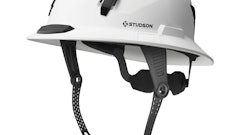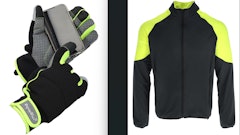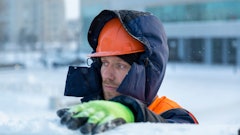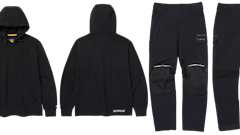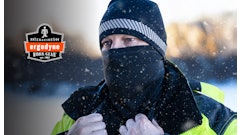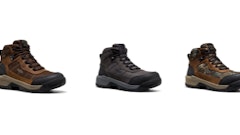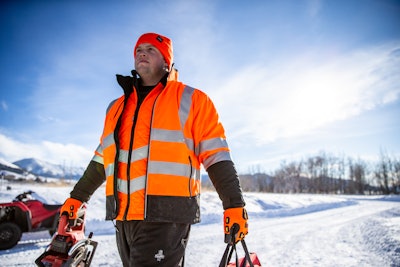
Every jobsite has its hazards, but few are as underestimated as the cold. It creeps in quietly, draining focus and energy — until workers learn how to fight it with purpose. Despite the serious risk cold conditions pose on the job, many crews continue to layer up haphazardly, grabbing whatever looks the warmest without understanding the science behind thermal protection. The result? Reduced dexterity, overheating and lost productivity.
Staying warm isn’t about piling on more clothes. It’s about understanding how the body loses heat and building a system to prevent it. Layering PPE, the right way, allows workers to regulate body temperature, stay dry, and maintain mobility, even when conditions get tough.
How Does Heat Loss Happen?
The human body is designed to maintain a core temperature of roughly 98.6°F. When exposed to the cold, it constantly works to preserve that internal heat, but environmental factors can make the job harder.
The body loses heat through five key mechanisms:
- Radiation: heat radiates away from any uncovered surface.
- Convection: wind strips away warm air trapped near the skin.
- Conduction: direct contact with cold surfaces, like steel or concrete, pulls heat from the body.
- Evaporation: moisture from sweat draws heat as it evaporates.
- Respiration: each exhaled breath carries warmth away.
Protecting against all five forms of heat loss requires a balance of insulation, moisture management and wind resistance. When one layer fails — like when moisture builds up in the base layer — the entire system can collapse.
How to Layer Correctly for the Cold
Think of layering as building a wall against heat loss. Each layer serves a distinct purpose, and together they create a controlled micro-climate that supports both comfort and performance.
The Base Layer
The thermal base layer’s job is moisture management. It pulls sweat off the skin before it can chill the body.
Avoid cotton, as it soaks up moisture and traps it against the skin. Instead, workers should choose synthetic or wool blends that wick efficiently and dry fast. This layer should fit snugly, but not tightly, allowing full mobility while maintaining skin contact for proper moisture transfer.
The Heat-Trapping Insulation Layer
Once moisture is managed, insulation does the heavy lifting. Its job is to trap warm air close to the body. The key to insulation isn’t thickness — it’s trapped air. Synthetic fibers like down alternatives, fleece or advanced polyester hollow-core insulation create pockets of air that act as thermal buffers.
Workers in stop-and-start tasks, like operators or supervisors, need more insulation than those performing continuous heavy labor, whose bodies generate more heat.
The Protective Outer Layer
The outer layer must block wind and repel rain, sleet or snow while still allowing excess body heat to escape. Avoid overly tight or non-breathable shells as they can trap sweat, turning clothing damp from the inside.
Features like vent zippers, breathable membranes and adjustable cuffs can drastically improve temperature control.
Avoiding the Overheating Trap
Overdressing is one of the most common mistakes in cold-weather workwear — and one of the most dangerous. Instead, workers should:
- Start slightly cool. Begin a shift feeling chilled. Body heat will rise within minutes of exertion.
- Vent strategically. Unzip collars or underarm vents during high-activity tasks to release excess heat.
- Layer for flexibility. Carry a removable mid-layer or insulated vest for easy adjustments.
Employers can also do their part by allowing short breaks for re-layering when conditions change. A small shift in temperature or workload can make a big difference.
Extending the Layering Logic
Heat is hardest to maintain in the extremities, where blood flow is naturally reduced to preserve core warmth. Layering principles apply here, too.
Hand Protection
In cold weather, a single pair of work gloves might not cut it. Adding a thin glove liner can wick moisture away from the skin and create an extra layer of warmth without sacrificing grip or dexterity.
Workers can adapt to changing temperatures by combining liners with insulated work gloves or swapping shells as the weather changes. For example, a thin, moisture-wicking polyester or wool liner worn under a waterproof work glove protects sweaty, clammy hands without adding unnecessary bulk. This two-part system lets workers maintain hand control without exposing skin or trapping sweat.
Head & Neck
Delicate skin around the face, ears and neck are particularly susceptible to frostbite. Hard-hat liners, balaclavas and neck gaiters built from breathable fleece or synthetic materials help retain warmth and protect these sensitive areas.
Feet
Moisture management is just as critical for feet as it is for the rest of the body. Wearing thin wicking socks under thermal wool socks, paired with insulated, waterproof boots, helps prevent both frostbite and trench foot injuries.
Matching Layers to Activity and Environment
Not all cold conditions are equal. Layering systems must adapt to both temperature and activity level.
 RefrigiWear, LLC
RefrigiWear, LLC
Training workers to read their environment and adjust layers accordingly is one of the simplest and most cost-effective safety measures an employer can implement.
The Productivity Payoff
While warmth is critical for safety, it’s also a major driver of performance. Studies show that cold stress reduces dexterity, slows reaction time, and increases fatigue, all of which heightens the risk for accidents and injuries.
Comfort also directly impacts productivity. When workers are properly dressed, they can focus on the task at hand — not on how cold they feel. A well-designed layering system means fewer breaks to warm up, fewer distractions and fewer errors from numb fingers or stiff joints.
A Measured Approach to Protection
Layering isn’t just about adding more bulk — it’s about choosing the right materials, fits and features to create synergy between each layer. For PPE buyers, that means prioritizing the following:
- Moisture control over bulk
- Adjustability over fixed insulation
- Breathability over impermeable shells
- Fit and mobility to ensure PPE doesn’t compromise safety compliance
When the science of heat retention meets practical field experience, workers gain both protection and confidence. A well-layered crew is not only warmer, they’re safer, sharper and more efficient.



